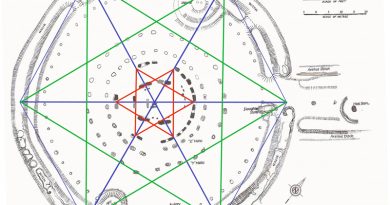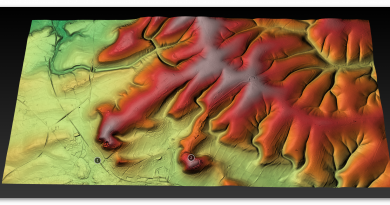Homo Superior – History’s Giants
The Mind of Homo Superior
Homo Superior (History’s Giants) was a product of genetic mutation and is part of the evolutionary process of which we are all a part. This mutation created a Homo species that stood tall and was massively strong, but more importantly, our evolutionary process had a larger brain than any Homo in history. However, this massively intelligent brain was different from the Homo Sapien Sapien brains that we are blessed with today.
If we venture into the mental differences of Homo Superior (History’s Giants) and compare them to our cognitive abilities and processes, we just might catch a glimpse of how this ancestor of ours not only thought but moreover acted in the past. The first and most crucial brain mutation of Homo Superior was the language; it is only speculation to find if both Neanderthal and Sapiens had the ability 50,000 years ago to speak. But one thing is proven – Homo Superior could ‘talk’, and that being the case, it would be interesting to ask what language would he have spoken and whether we would recognise it today.
From the archaeological and genetic evidence, we have seen that Homo Superior (History’s Giants) originated in the Caucasus on the border of Europe & Asia in the previous chapters. The final piece of the evolutionary trail is to find where the language developed in the exact location, allowing us to find out what language the Atlanteans spoke.
The Indo-European Language
In the 16th century, European visitors to the Indian subcontinent suggested similarities between Indo-Aryan, Iranian, and European languages. In 1583, an English Jesuit missionary in Goa called Thomas Stephens wrote to his brother noting similarities between Indian languages, specifically Sanskrit, and Greek and Latin. This letter remained unpublished until the 20th century.
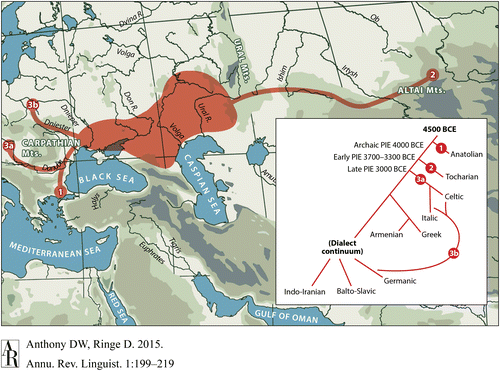
Another account mentioned in the ancient language Sanskrit came from Filippo Sassetti (born in Florence in 1540), a merchant who travelled to the Indian subcontinent. Writing in 1585, he noted some word similarities between Sanskrit and Italian (these included devaḥ/dio “God”, sarpaḥ/serpe “serpent”, sapta/sette “seven”, aṣṭa/otto “eight”, nava/nove “nine”). However, neither Stephens’s nor Sassetti’s observations led to further scholarly inquiry.
In 1647, Dutch linguist and scholar Marcus Zuerius van Boxhorn noted the similarity among Indo-European languages and supposed that they derived from a primitive common language he called Scythian. He included Dutch, Albanian, Greek, Latin, Persian, and German in his hypothesis, later adding Slavic, Celtic, and Baltic languages. However, Van Boxhorn’s suggestions did not become widely known and did not stimulate further research.
The Ottoman Turkish traveller Evliya Çelebi, who visited Vienna in 1665–1666 as part of a diplomatic mission, noted a few similarities between words in German and Persian. Gaston Coeurdoux and others made observations of the same type. Coeurdoux thoroughly compared Sanskrit, Latin and Greek conjugations in the late 1760s to suggest a relationship between them. Similarly, Mikhail Lomonosov compared different language groups of the world, including Slavic, Baltic (“Kurlandic”), Iranian (“Medic”), Finnish, Chinese, “Hottentot”, and others. He emphatically expressed the antiquity of the linguistic stages accessible to the comparative method in the draughts for his Russian Grammar (published 1755).
The hypothesis reappeared in 1786 when Sir William Jones first lectured on the striking similarities between three of the oldest languages known in his time: Latin, Greek, and Sanskrit, to which he tentatively added Gothic, Celtic, and Persian, though his classification contained some inaccuracies and omissions.
It was Thomas Young who in 1813 first used the term Indo-European, which became the standard scientific term through the work of Franz Bopp, whose systematic comparison of these and other old languages supported the hypothesis. A synonym for “Indo-European” is Indo-Germanic (Idg. or IdG.), which defines the family by indicating its southeastern most and northwestern most branches.
In most languages, this term is dated or less common, whereas in German it is still the standard scientific term. Advocates of Indo-Germanic often claim that “Indo-European” is misleading because many historic and several living European languages (the unrelated Uralic languages, as well as several others, are also spoken in Europe) do not belong to this family. Advocates of Indo-European counter that Indo-Germanic is misleading because many of the European languages included are not in fact Germanic.
Franz Bopp’s Comparative Grammar, which appeared between 1833 and 1852, is the beginning of Indo-European studies as an academic discipline. The classical phase of Indo-European comparative linguistics leads from this work to August Schleicher’s 1861 Compendium and up to Karl Brugmann’s Grundriss, published in the 1880s. Brugmann’s junggrammatische re-evaluation of the field and Ferdinand de Saussure’s development of the laryngeal theory may be considered the beginning of “modern” Indo-European studies. The generation of Indo-Europeanists active in the last third of the 20th century (such as Calvert Watkins, Jochem Schindler and Helmut Rix) developed a better understanding of morphology and the wake of Kuryłowicz’s 1956 Apophonie, knowledge of the ablaut.
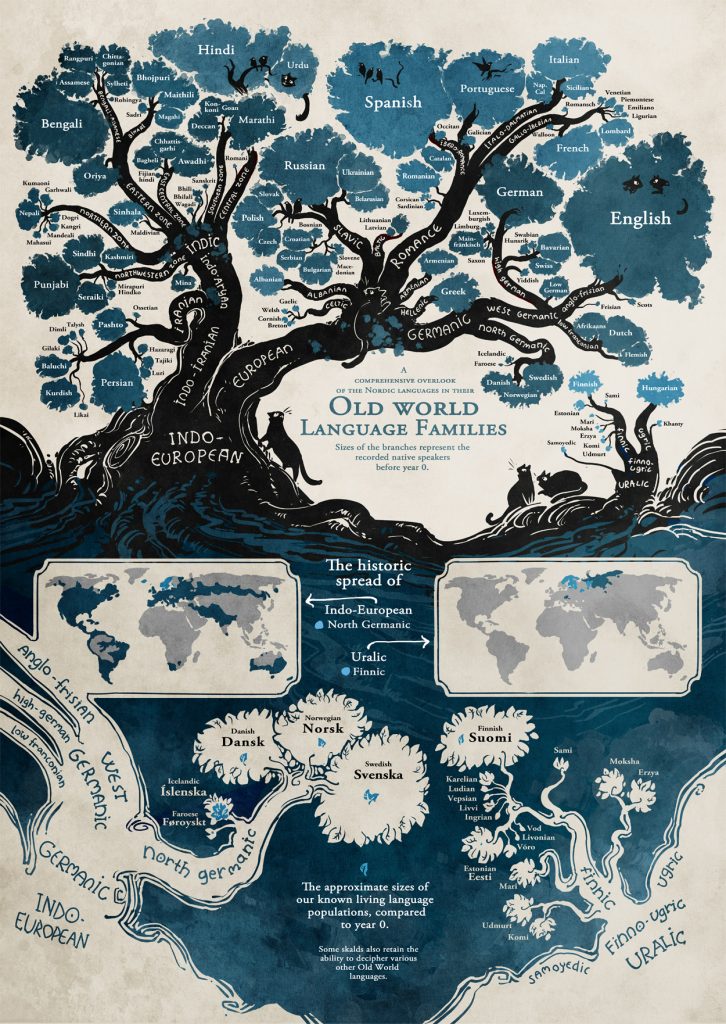
In recent times, a new paper has been produced whose authors are very confident to suggest it proves that the first ‘Proto-Indo-European’ languages originated in the Caucasus. “Archaeological evidence and linguistic evidence converge in support of an origin of Indo-European languages on the Pontic-Caspian steppes around 4,000 years BCE. The evidence is so strong that arguments in support of other hypotheses should be re-examined” The Indo-European Homeland from Linguistic and Archaeological Perspectives, David W. Anthony and Don Ringe, Anthropology Department, Hartwick College, Oneonta, New York.
Within the report, they state: “Readers might reasonably ask whether a reconstructed prehistoric language such as Proto-Indo-European (PIE) is “real enough” to be linked to the archaeological record. Most historical linguists would say yes—with qualifications.
It is true that we can recover only part of any prehistoric language: a larger or smaller portion of its lexicon and a larger or smaller fragment of its grammar, depending on how the attested daughter languages preserve much-inherited material. As a result, some details may remain unrecoverable, and our reconstructions are sometimes temporally “out of focus,” including slightly older and slightly less old information in the same reconstruction.”
However, as there is a lack of written records to compare the language of the spoken word, they use to look at comments from newly discovered artefacts which can be dated to indicate when the language evolved – so long as the dates of the artefacts are accurate. Here is an example:
The late PIE word for ‘axle’ is unproblematically reconstructible as *h2eḱs- (e.g., Mallory & Adams 2006, p. 248). All its descendants, called cognates, retained the meaning ‘axle’ in Indo-Iranian, Balto-Slavic, Germanic, Celtic, Italic, and Greek. Some cognates are attested very early (e.g., in Latin, Ancient Greek, and Sanskrit). This is a protolexeme with an established meaning (as defined by Clackson 2007, pp. 186–89). It is difficult to explain the shared meaning except by inheritance from late PIE; so also the shared sequence of sounds, which can be shown to have evolved into the attested cognates from an ancestral form *h2eḱs- by regular rules of sound change for each language. Axles cannot exist apart from wheeled vehicles, so a word meaning ‘axle’ in late PIE is evidence that wheeled vehicles existed during the period when late PIE was spoken. The invention of the wheel-and-axle principle, which first made waggons and carts possible, is solidly dated by radiocarbon after 4000–3500 BCE, a very well studied external fact (Bakker et al. 1999, Fansa & Burmeister 2004, Anthony 2007). This external fact ties late PIE to a real-world date after wheeled vehicles were invented, that is, after 4000–3500 BCE..
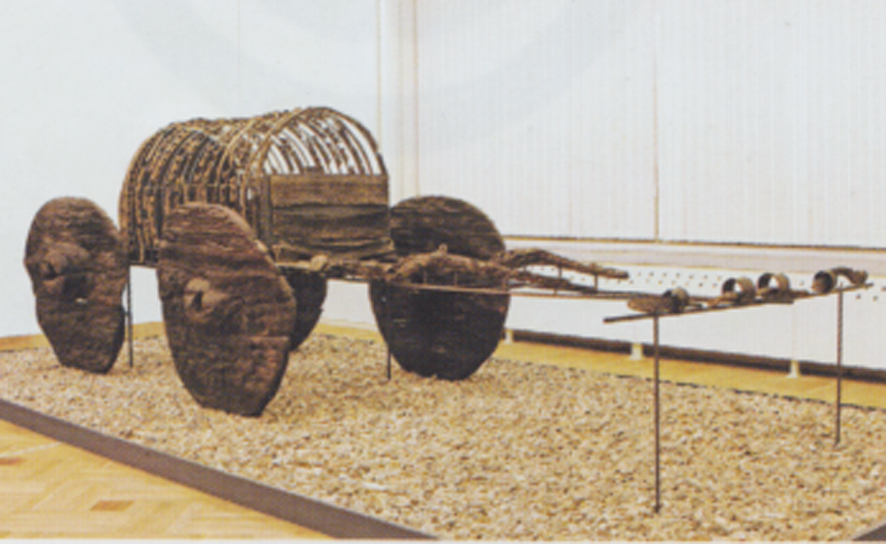
As we have seen earlier in the book, the wheel was invented at least two thousand years before the date on which they base their findings, and if we accept the cart tracks at Stonehenge’s Avenue, we are looking at four thousand years. As the Atlanteans were the discoverers of the wheel and the word axle, we can confidently establish their language was ‘Proto-Indo-European’, which we also know was invented at their birth place the Caucasus region.
Oral traditions
So we now know the language they spoke, and the reason it took so long to find this ancient language is that this civilisation did not write their language down. The most intriguing aspect of written language is that anthropologists see it as an ‘indication’ of a great culture – but are we biased? Remember, this Civilisation lived far longer than our current society and were taller, stronger, and by cranial skull comparison, more intelligent than us – yet they did not write.
So, does history show us that perhaps our definition and understanding of ‘intelligence’ and ‘civilisation’ has been misinterpreted?
The oldest and some would say the greatest orator in history would be Socrates. Dr Raphael Woolf, Kings College London, has analysed Socrates’ objections to writing. He (Socrates) worried that reliance on writing would erode memory (it has!), but also, maybe more importantly, that reading would mislead students to think that they knew when they only had data. In the dialogue titled Phaedrus, Socrates tells the story of the ancient Egyptian god Theuth, inventor of letters, and what the god and king Ammon (Thamus in Greek) said to Theuth about his invention:
“…this discovery of yours will create forgetfulness in the learners’ souls, because they will not use their memories; they will trust to the external written characters and not remember of themselves. The specific which you have discovered is an aid not to memory, but to reminiscence, and you give your disciples not truth, but only the semblance of truth; they will be hearers of many things and will have learned nothing; they will appear to be omniscient and will generally know nothing; they will be tiresome company, having the show of wisdom without the reality.
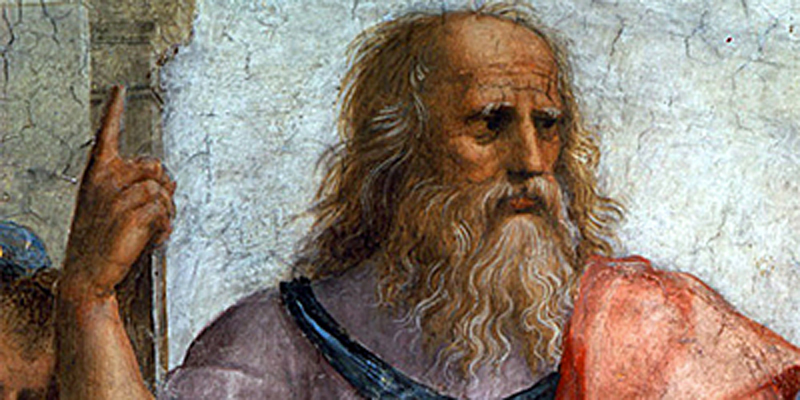
…writing is unfortunately like painting; for the creations of the painter have the attitude of life, and yet if you ask them a question they preserve a solemn silence. And the same may be said of speeches. You would imagine that they had intelligence, but if you want to know anything and put a question to one of them the speakers always gives one unvarying answer. And when they have been once written down they are tumbled about anywhere among those who may or may not understand them, and know not to whom they should reply, to whom not: and if they are maltreated or abused they have no parent to protect them; and they cannot protect or defend themselves.”
Socrates leads his friend Phaedrus to see the “…living word of knowledge which has a soul and of which the written word is properly no more than an image…” Socrates asks, “if a farmer would not sow his good seeds in the summer heat and expect to reap in eight days, but knows he must sow in proper time and good soil, and wait eight months to reap, then would not a teacher of truth know as much about proper planting and care of the words he teaches by?
Then he will not seriously incline to ‘write’ his thoughts ‘in water’ with pen and ink, sowing words which can neither speak for themselves not teach the truth adequately to others? … No, that is not likely–in the garden of letters he will sow and plant, but only for the sake of recreation and amusement; he will write them down as memorials to be treasured against the forgetfulness of old age, by himself, or by any other old man who is treading the same path”
Socrates sees writing as an imperfect tool to impart information or experience – do we in the 21st Century agree? Our libraries are closing, and book sales are falling – so why is this if it is ‘a perfect form of communication’? The truth is that we also believe writing is imperfect, so we have invented video, TV and the radio, as we all now agree with Socrates and see writing as an inferior and flawed communication system.
But was Socrates the only critic of writing against oral tradition?
The ancient Greek Assembly and the Roman Senate frowned upon their leaders who required notes when speaking – promoting the old custom and leadership and speaking from memory. And any oral discussion would not be complete without reference to both Jesus and Mohammad, who were what we call today ‘illiterate’, yet their abilities aside from writing should indicate that the academic suggestion that writing was a sign of civilisation is fundamentally flawed.
Further Reading
For information about British Prehistory, visit www.prehistoric-britain.co.uk for the most extensive archaeology blogs and investigations collection, including modern LiDAR reports. This site also includes extracts and articles from the Robert John Langdon Trilogy about Britain in the Prehistoric period, including titles such as The Stonehenge Enigma, Dawn of the Lost Civilisation and the ultimate proof of Post Glacial Flooding and the landscape we see today.
Robert John Langdon has also created a YouTube web channel with over 100 investigations and video documentaries to support his classic trilogy (Prehistoric Britain). He has also released a collection of strange coincidences that he calls ‘13 Things that Don’t Make Sense in History’ and his recent discovery of a lost Stone Avenue at Avebury in Wiltshire called ‘Silbury Avenue – the Lost Stone Avenue’.
Langdon has also produced a series of ‘shorts’, which are extracts from his main body of books:
For active discussions on the findings of the TRILOGY and recent LiDAR investigations that are published on our WEBSITE, you can join our and leave a message or join the debate on our Facebook Group.



